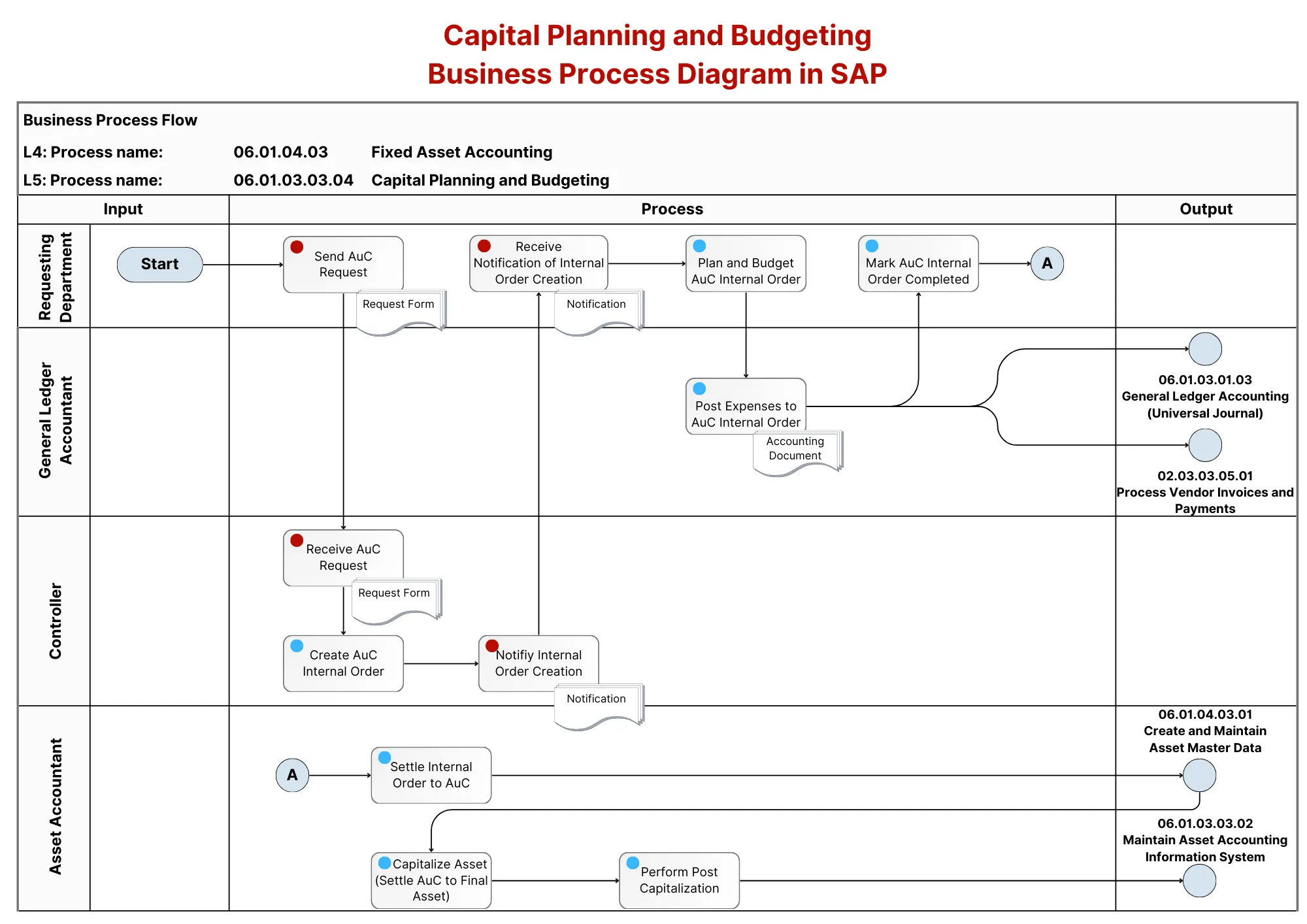This process focuses on Capital Planning and Budgeting within SAP, specifically for managing Assets under Construction (AuC). In cases where an asset takes more than one year to build, the construction phase is managed as an AuC. The internal order is created to track the expenses incurred during the construction period. These expenses are then budgeted and monitored through the internal order. Once the construction phase is completed, the internal order is settled, and the AuC is capitalized into a final asset. Subsequent adjustments, if any, are made through post-capitalization. This ensures that assets are properly tracked, budgeted, and transitioned from the construction phase into operational use within SAP’s asset accounting system.
Below is a breakdown based on the detailed process steps from the flowchart image:
- Send AuC Request 📝: The process begins when the requesting department sends a request to create an AuC (Asset under Construction). This form initiates the creation of the internal order for the AuC.
- Receive AuC Request 📥: The General Ledger Accountant receives the AuC request form and prepares for the next steps in the budgeting and internal order process.
- Create AuC Internal Order 📋: The Controller creates an internal order specific to the AuC, assigning it to the AuC asset class. This internal order will be used to track and monitor expenses for the construction project.
- Notify Internal Order Creation 📢: Once the internal order is created, the Controller sends a notification to the General Ledger Accountant to confirm its availability for budget planning.
- Plan and Budget AuC Internal Order 💼: The requesting department sets a budget and plans expenses for the AuC internal order. This step ensures that the internal order stays within the allocated financial limits for the project.
- Post Expenses to AuC Internal Order 💵: The General Ledger Accountant posts expenses to the internal order as they occur. These expenses are deducted from the AuC internal order budget and monitored throughout the project.
- Mark AuC Internal Order Completed ✅: Once all expenses have been posted and the construction phase is nearing completion, the internal order is marked as completed. This step indicates that the internal order is ready to be settled.
- Settle Internal Order to AuC 🔄: The Asset Accountant settles the internal order to the AuC, ensuring all recorded expenses are accounted for. This step finalizes the expenses associated with the internal order.
- Capitalize Asset (Settle AuC to Final Asset) 🏗️: After the internal order has been settled, the AuC is capitalized into a final asset. The legal title transfer is recognized, and the asset is ready for economic use.
- Perform Post Capitalization 🛠️: Any corrections or adjustments to the acquisition and production costs are handled through post-capitalization. This step ensures the correct financial amounts are reflected in the final asset.
This process ensures the smooth handling of capital planning, from the creation of an internal order for assets under construction to their final capitalization as operational assets within SAP FI-AA.
